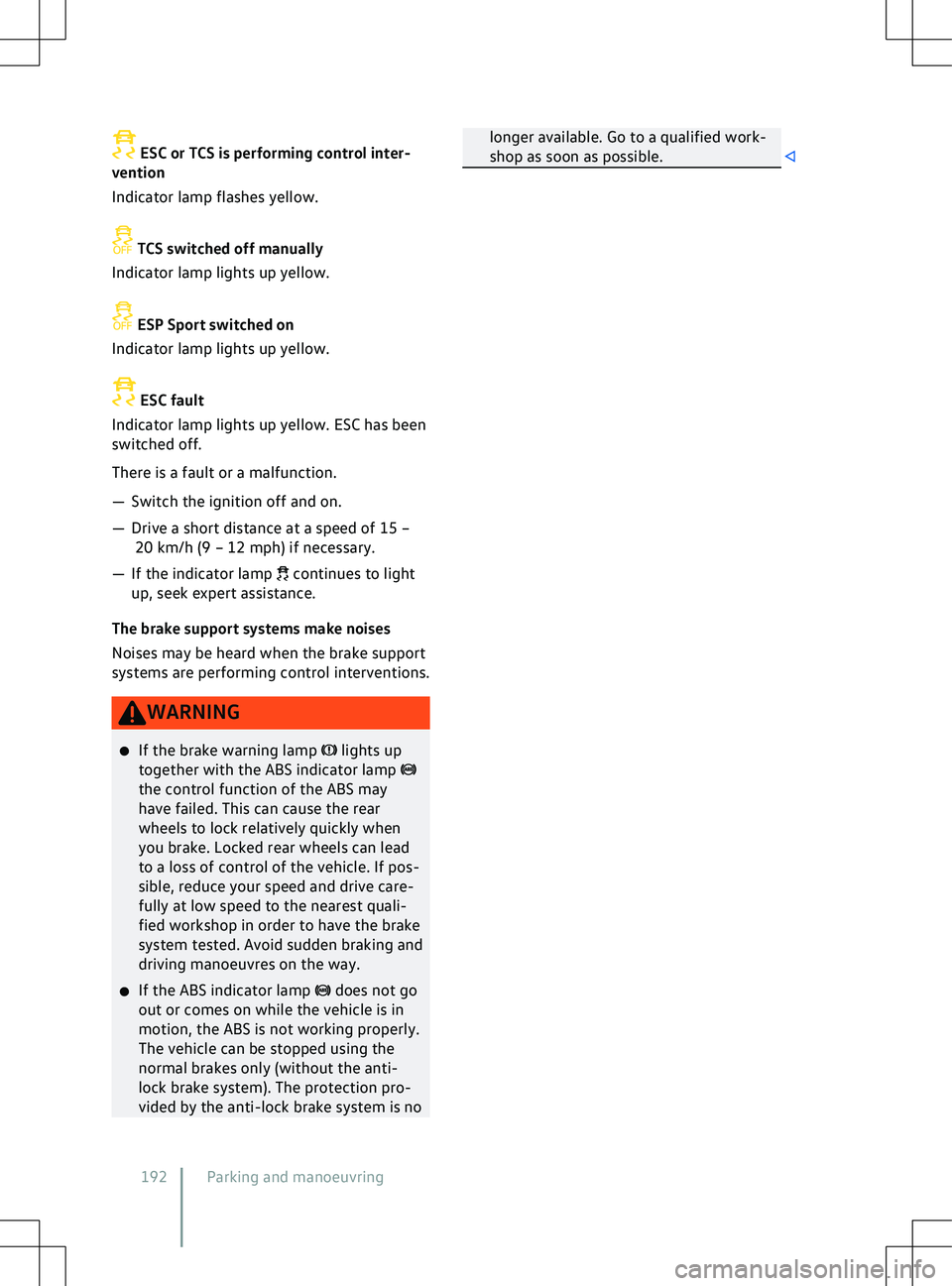Page 111 of 417
duration of the one-sided parking light is
generally double that of the continuous
parking light on both sides. Entry and exit lighting (orien-
tation lighting)
The entry and e
xit lighting lights up the area
immediately surrounding the vehicle when
you get in or out of the vehicle in darkness.
The entry and exit lighting is controlled auto-
matically by a light sensor.
Switching on entry lighting
Page 178 of 417
Parking and manoeu-
vring
P
arking
Parking the vehicle next to the driving mode selec-
tor lights up red. 1. Depress and hold the brake pedal.
2.
Switch on the electronic parking brake
Page 179 of 417
Electronic parking brake
Operating the electronic park-
ing brake
Fig. 114
On the driving mode selector: but-
ton f
or the electronic parking brake.
Switching on
Page 183 of 417
Finding a suitable parking space
To ensure that a suitable parking space can
be displayed and detected correctly, the f
ol-
lowing prerequisites must be met:
Page 184 of 417
The following also applies to vehicles with
Area View
F
ront perpendicular parking. Rear perpendicular parking.
Front crossing traffic.
Rear crossing traffic.
Switch to trailer or offroad support
(
country-dependent)
Page 190 of 417
Switching on and off
Please refer to and on page 179 and
at the start of the chapter on page 187.
Fig. 118
Inf otainment system screen: Area
View in “front perpendicular parking mode” (il-
lustration). Bird
Page 191 of 417
Function
Fig. 119
Illustration of Rear Traffic Alert: moni-
tored area around the v ehicle leaving the parking
space.
Rear Traffic Alert functions using radar sen-
sors in the rear bumper.
The system detects approaching and moving
objects in the rear and side areas around the
vehicle
Page 194 of 417

ESC or TCS is performing control inter-
v
ention
Indicator lamp flashes yellow. continues to light
up, seek e
xpert assistance.
The brake support systems make noises
Noises may be heard when the brake support
systems are performing control interventions. lights up
together with the ABS indicator lamp the control function of the ABS may
ha
ve failed. This can cause the rear
wheels to lock relatively quickly when
you brake. Locked rear wheels can lead
to a loss of control of the vehicle. If pos-
sible, reduce your speed and drive care-
fully at low speed to the nearest quali-
fied workshop in order to have the brake
system tested. Avoid sudden braking and
driving manoeuvres on the way.
�x If the ABS indicator lamp does not go
out or comes on while the v
ehicle is in
motion, the ABS is not working properly.
The vehicle can be stopped using the
normal brakes only (without the anti-
lock brake system). The protection pro-
vided by the anti-lock brake system is no longer available. Go to a qualified work-
shop as soon as possible.
192 Parking and manoeuvring